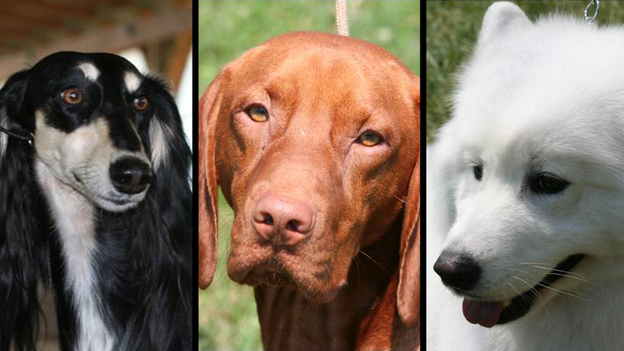The headline, "Dog Hair May Shed Light On Cancer," appeared in my RSS feed inbox. I clicked on it because (a) I am a sucker for stories about dogs, and (b) I was hoping for pictures of said cute puppy puppy puppies. I was slightly disappointed on the first point; not at all on the second.

Say it with me: "Awwww..."
The story started off innocently enough:
Scientists have located the genes that make a poodle's hair curly, and a collie's hair long and straight. No, this wasn't just a way to ease the boredom of laboratory work, but part of a long-term project to figure out how genes cause disease.It lost me a bit in the following section - not the science, but the joining of subjects - but I pressed on:
The coats of domestic dogs vary widely — they can be long, short, straight, wavy, curly, wiry, smooth or a combination of different varieties. And that difference is exactly why cancer geneticist Elaine Ostrander decided to study dog hair.
Ostrander, who works at the National Human Genome Research Institute, wanted to know how genes create all this variety. So she studied about 1,000 dogs from about 90 different breeds.She searched dog DNA the way a chef might compare recipes for souffle. What changed ingredient makes one different from the next? What mutation gives an Airedale terrier his curls and a golden retriever her tresses?
I get it - you study genetic pathways searching for clues about seemingly unrelated genetic pathways of interest. I've done research like that myself. But they seemed to make the leap without any supporting evidence, or even explanation.
What Ostrander and her team discovered was that only three genes control all the different kinds of dog hair.
"You can go to the dog park, and every breed of dog looks different from every other breed, it seems," says Ostrander. "Yet, you know, when we get down to the molecular biology, we really find that it's a combination of three different genes that accounts for all that variation."
This also has value in studying disease. Human and dog cancers are similar, so the fact that only three genes can create so much variation in hair might provide clues to how genes cause so many cancers in dogs and humans.
"Whether or not the exact same gene is mutated in humans doesn't really matter," says Ostrander. "It's telling us the pathways that are involved, the kinds of genes that are involved, and the kinds of changes in those genes that lead to those diseases."
Hmm. Well, maybe the article in Science Express does a better job making the connection, because this just wasn't doing it for me.
Sadly, I was disappointed. Nowhere in the article does the word "cancer" appear. Not even an errant "disease."
My problem is not with the underlying science, the field of genetics, or research about dogs. The story in itself is interesting. I would not have guessed that "these three mutations in various combinations explain the observed pelage phenotype of 95% of dogs," as the authors state.
My problem is that the NPR story does a disservice to Ostrander's research and to medical reporting. If you're going to make the intellectual leap, you have to show readers where and how to jump.
*With one exception; oddly enough, from today. Radio Times' program today on a fashion industry documentary used the words "bondage," "dominatrix," and "shoulder pads" in the same sentence. Serious WTF lookage.






Comments